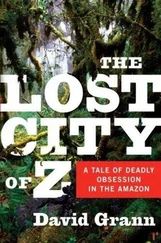The situation was equally difficult on the banks of the East River. According to “Liquid Assets,” a history of the city’s water system by Diane Galusha, natural groundwater made the rock so soft that the shafts which allowed sandhogs to descend into the tunnel became watery death traps. Engineers were forced to build on each bank a giant inverted box called a caisson-a risky device that was pioneered during the laying of the foundations of the Brooklyn Bridge. About fifteen feet on each side and weighing as much as two thousand tons, the steel-and-concrete boxes were sealed on all sides except the bottom. As they were lowered into the soft ground, compressed air was pumped into the caissons, pushing out the mud and water. To get into the caisson the sandhogs were lowered in a bucket down a steel shaft; from there they entered an air lock, much like a diving chamber. Air was pumped in, and the sandhogs could feel their eardrums strained to bursting, the blood rushing to the center of their bodies. Many assumed that they were dying.
Once the pressure in the air lock was equal to that inside the caisson, the sandhogs crawled through a trapdoor into the caisson, where, standing ankle-deep in mud, they began to dig from the bottom, removing the muck in a bucket through a hatch in the ceiling. As they dug, under pressure that was so great they could work for only two hours at a time, the caisson would slowly sink, allowing the sides of the box to carve the lining of a shaft. An engineer who had been in a caisson during the construction of the Brooklyn Bridge described the sensation this way: “The pulse was at first accelerated, then sometimes fell below the normal rate. The voice sounded faint, unnatural, and it became a great effort to speak. What with the flaming lights, the deep shadows, the confusing noise of hammers, drills, and chains, the half-naked forms flitting about, with here and there a Sisyphus rolling his stone, one might, if of a poetic temperament, get a realizing sense of Dante’s Inferno.”
More unnerving, though, was the threat of a “blowout”-a breach in the lining of the caisson wall, caused by a sudden imbalance of pressure, which created suction much like that of an airplane door opened in mid-flight, accompanied by a terrifying kettle-like screech. Men had a few seconds to climb inside the air lock; if they didn’t make it, they could be sucked into the earth, as happened in 1916, during the construction of a tunnel under the East River, when three men were swallowed through a crevice; two died, while a third, Marshall Mabey, was propelled safely into the afternoon sky on a geyser said to be four stories high. “I felt myself being pushed into the hole,” Mabey later explained to a reporter. “As I struck the mud it felt as though something was squeezing me tighter than I had ever been squeezed. I was almost smothered.”
It’s not known how many sandhogs died building the Catskill system, but in 1913 the Pine Hill Sentinel reported, “Approximately ten out of every 100 [workers] are killed or injured every year. More than 3,800 accidents, serious and otherwise, to workers on the great aqueduct have been recorded… The men doing the rough work are virtually all foreigners or negroes. Owing to the laborers being so inconspicuous, the death by accident of one or more of them attracts no public attention.”
In 1917, more than a decade after the work began, the last explosion was sounded. It was now possible to walk underground from Manhattan all the way to the Catskills. The city marked the accomplishment, but the event was more subdued than the Croton celebration. The moment a new fountain by the reservoir in Central Park was turned on, the skies opened up and rain poured down.
“Hey, can you smell it?” Jimmy Ryan asked.
“What is it?” I asked.
“Dynamite.”
We were back inside City Tunnel No. 3, watching the sandhogs scoop out the blasted rock-“mucking it out,” as Ryan called it. It had been only minutes since I watched the men detonate the explosives, and the misty air was laden with smoke and dust; soon, a thin yellow film covered everything. Rocks that had endured earthquakes had been smashed against the surrounding walls. Some were cracked in two, revealing bits of mica, beautiful white glimmers amid the dust; others were black and dull.
At this early stage, the method of digging through the rock was similar to that used on the first water tunnel. As Ryan put it, “You stick the dynamite in, blow the motherfucker up, then haul the shit out.” It was a repetitive, driving ritual, one in which there was no day or night and the sound of concussions replaced the passage of time. The men now loaded crushed granite into enormous buckets that carried as much as twenty-eight tons in a single load and were hoisted out by a crane through the same shaft that the men had come down. Each sandhog had his own role in the operation. There were muckers and blasters and signalmen and nippers; these last remained above the hole, connecting materials to the hoist. One veteran nipper, Brian Thorne, told me, “Everyone has a skill. My best skill is rigging. The guys downstairs want to know they can trust the guy that’s upstairs to put stuff over their head and not worry. If you hit someone, you can’t say, ‘Oops, I’m sorry.’ That person is dead. So you always have to be on top of your game.”
Over the years, Ryan had risen from mucker to foreman, or “walking boss,” and now, as president of the sandhogs’ union, he is largely responsible for the whole gang. One colleague paid him the highest compliment you can give a sandhog: “No job is too dirty for Jimmy.” But as Ryan waded through the mud, his eyes peering out from under his hard hat, he seemed slightly removed. When younger sandhogs started to recall some near-death tale, he would arch an eyebrow and say, “You got some line,” or “You’re a real bullshit artist, aren’t you?” Unlike the other men, who tell stories about the tunnel the same way fishermen spin tales about the sea, Ryan rarely speaks of his time underground. When his shift is over, he heads home to Queens, where he often changes from his digger uniform into bright golf pants and plays the links, trying to propel the ball with his sore arms as he breathes in the smell of freshly cut grass. His wife told me, “He never says a word about the tunnel. I don’t know what he does down there.”
Ryan is not, by the standards of the trade, a particularly superstitious man-he doesn’t carry a lucky crescent wrench or refuse to go down on Friday the thirteenth-but he maintains a constant watchfulness. And now, while the others told jokes, Ryan stood off by himself, quietly inspecting the walls to make sure there were no cracks that might cause chunks to shear off.
After a while, he trudged to the end of the tunnel, where there was a pile of smoldering rubble. At lesser depths, sandhogs had been known to uncover jewelry, murder weapons, false teeth, a chest of coins, a Colonial dungeon. “In the sewer tunnels, you sometimes find rats,” Ryan said. “But this far down there are only sandhogs.”
He reached into his pocket and pulled out a plastic bag, which he carefully unwrapped, revealing not his lunch but a pack of Marlboros. He was the only one who, in spite of the stinging dust, seemed always to work with a cigarette dangling from the corner of his mouth-like the detectives in the old dime novels he likes to read.
Some of the men propped a ten-foot ladder against the rubble and Ryan started to climb it, the embers of his cigarette leading the way. “Come on,” he said. When I reached the top, he pointed down the tunnel, as if to say, Go on, take a look. And I saw a dozen figures moving through the dusty haze. There was a cacophony: men slamming picks into the jagged rocks, drills probing new holes, buckets moving back and forth amid sparks that flickered like fireflies. After five months of blasting and mucking, of two shifts working sixteen hours a day, of engineers and contractors measuring the quickest route, they had advanced only two city blocks, from Twenty-ninth Street to Thirty-first Street. But as I peered from one end to the other at the ceiling of rock, dripping with water and bathed in sulfurous light, I could sense the first hint of a design.
Читать дальше











